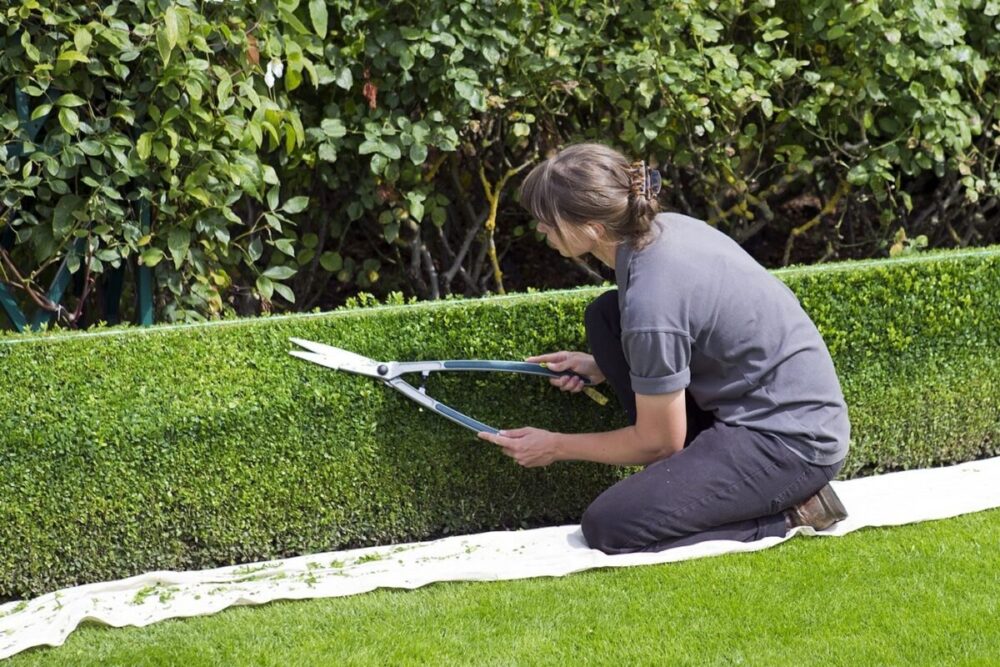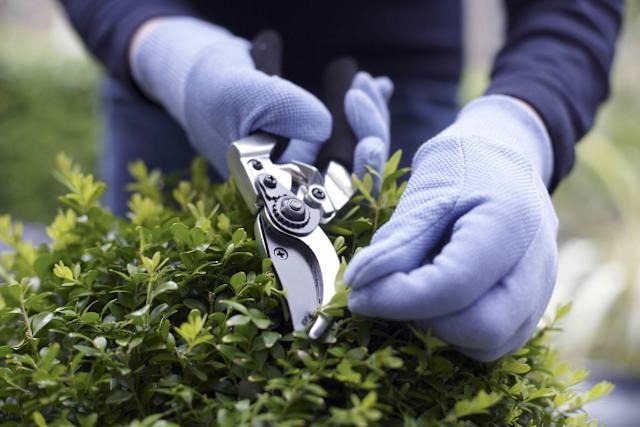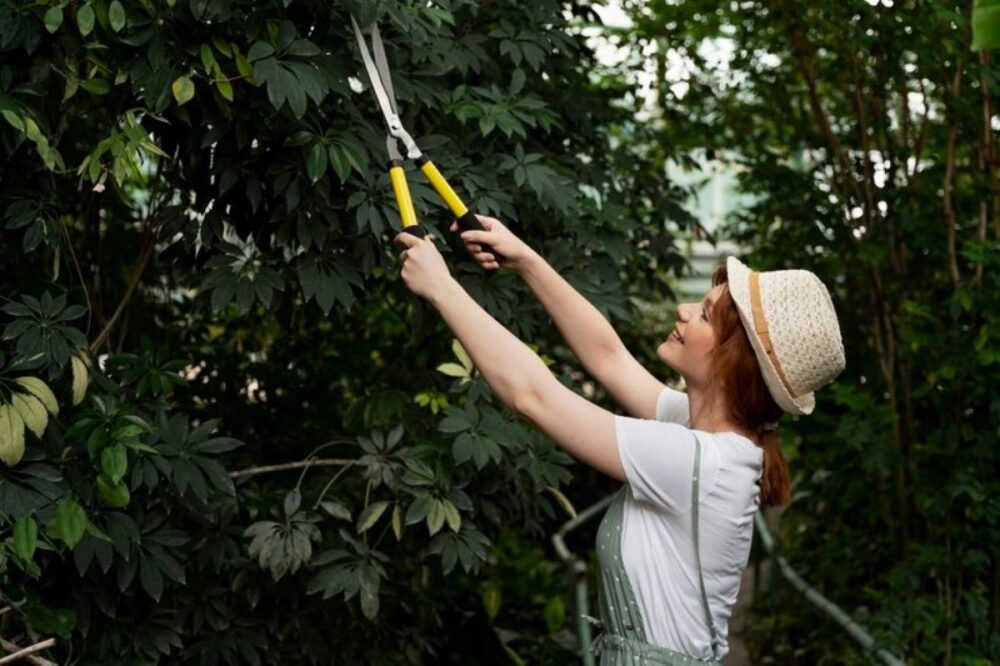A beautifully shaped garden always feels intentional. Even when the planting style is natural or relaxed, there is a sense of balance that guides the eye and gives each plant space to shine. This balance does not happen by accident.
It is created through thoughtful pruning that enhances the natural form of shrubs, trees, and hedges while preventing overcrowding or awkward, uneven growth.
When pruning is guided by both plant health and artistic vision, gardens take on a structure that feels welcoming, harmonious, and visually pleasing throughout the seasons.
Pruning for aesthetics begins with observation. Every plant has a natural growth habit, whether upright, arching, spreading, or cascading.
The goal of aesthetic pruning is not to force a plant into an unnatural shape but to refine and strengthen the form it already wants to express.
When gardeners prune with this understanding, each cut supports the plant’s architecture rather than working against it.
The result is a garden that feels both curated and alive, expressing character without appearing rigid.

Source: ecogardener.com
One of the key ideas in aesthetic pruning is visual balance.
A plant that grows too heavily on one side appears lopsided and draws attention for the wrong reasons.
By selectively removing excess branches, gardeners can bring symmetry back to the plant.
This is especially important with shrubs that mature unevenly or have been allowed to expand without guidance.
With a few well-placed cuts, the plant becomes more structured, and the surrounding garden benefits from the improved proportions.
Pruning also enhances the way plants interact with light.
Dense, unpruned shrubs often cast heavy shade on plants beneath them, creating dark patches or stifling growth.
Thinning out crowded branches allows sunlight to reach the interior, brightening the garden and supporting layers of planting.
This creates depth and movement, as shadows shift across the branches and leaves throughout the day.
Light is one of the most powerful tools in creating atmosphere, and pruning helps shape how it flows through the space.
In the middle of this process comes the practical need for precision tools.
This is where reliable guidance from Garden Machinery Direct becomes especially valuable.
The right tool makes shaping work more accurate, helping create smooth, clean lines rather than jagged or uneven cuts.

Source: groworganic.com
When gardeners use sharp, well-designed tools, they can refine silhouettes with confidence.
Clean cuts heal faster, maintain plant health, and contribute to the overall polished look of the garden.
Hedges offer some of the clearest examples of aesthetic pruning. Whether formal or informal, a hedge should frame the garden, not smother it.
Formal hedges benefit from crisp edges and flat planes, while informal hedges need gentle shaping that maintains their natural softness.
A well-pruned hedge guides movement through the garden, defines boundaries, and creates a backdrop for flowering plants.
Without regular shaping, hedges quickly lose their form, becoming bulky or patchy.
Aesthetic pruning restores their role as structure and support within the larger design.
Trees also play a major part in the visual story of the garden.
Their canopies, when pruned with intention, create beautiful silhouettes that shift with the seasons.
Removing low or awkward branches lifts the crown, allowing space beneath for planting or pathways.
This creates height variation and helps establish the vertical rhythm that makes a garden feel layered.
Overgrown or crowded branches can make trees appear heavy or unbalanced, while selective pruning reveals their natural grace.
When done thoughtfully, aesthetic pruning transforms a tree from a mass of foliage into a sculptural centrepiece.
Shrubs, too, respond beautifully to shaping. Many flowering shrubs look their best when gently opened up, creating airy forms that sway with the breeze.

Source: aol.com
By removing inward-growing or crossing branches, gardeners encourage outward and upward growth that creates a fuller, more rounded shape.
This makes shrubs more visually appealing and gives flowers space to bloom freely.
Shaping flowering shrubs also helps maintain consistency, ensuring that they remain focal points rather than sprawling distractions.
Pruning for aesthetics also involves controlling scale. Plants that grow too tall or wide can overshadow smaller companions, disrupting the balance of the border.
Shaping helps maintain proportion so that each plant has its own moment without stealing attention from others.
This sense of proportion becomes especially important in smaller gardens, where every element must work together to create harmony rather than competition.
Texture and movement are subtle but crucial aspects of a visually appealing garden.
Pruning helps reveal the texture of bark, the pattern of branches and the unique structure of each plant.
A thoughtfully pruned garden highlights contrasts: the feathery softness of some shrubs beside the rigid form of others, or the open, airy canopy of a small tree above a dense cluster of perennials.
These details add sophistication and interest, making the garden visually dynamic even in seasons with fewer flowers.
Seasonal awareness is another part of aesthetic pruning.

Source: woodworkingskills.com
The form of a plant changes throughout the year, and pruning decisions should consider how branches will look in winter as well as summer.
A well-shaped shrub or tree maintains beauty even without foliage.
Strong branch structure, clean lines and balanced form all contribute to the garden’s winter silhouette, making pruning an investment in year-round appeal.
Ultimately, pruning for aesthetic appeal is about creating a garden that feels intentional without sacrificing the character of the plants.
When gardeners understand the natural form of each species and prune in a way that enhances it, the garden becomes a cohesive, artistic space.
The interplay of shape, light, texture and proportion transforms ordinary planting into a landscape that feels both expressive and ordered.
Aesthetic pruning is not about perfection but about harmony.
With the right cuts, plants become more balanced, more expressive and more deeply integrated into the design of the garden.
Over time, this careful shaping builds a landscape that feels alive, welcoming and visually rewarding through every season.





















